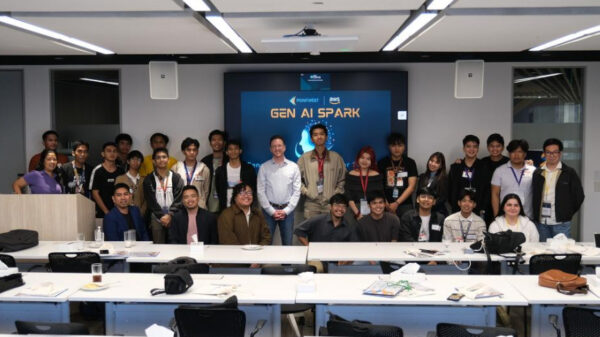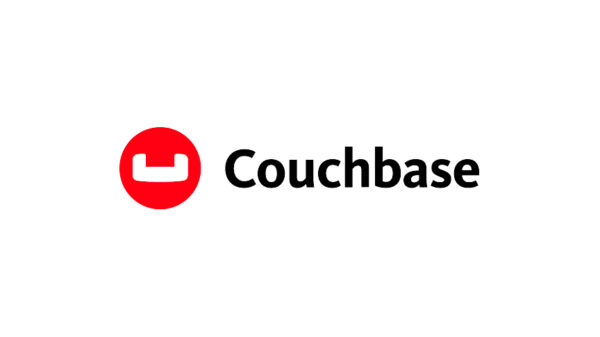Every Friday during busy months, Glenn Mendoza, vice president for information technology and systems at Seaoil, would get calls from end-users complaining about system downtime or unavailability, a common scenario in any company that has an on-premise IT infrastructure. But the complaints completely stopped after the independent oil producer ported its Enterprise Resource Planning (ERP) system to the Amazon Web Services (AWS) Cloud.

Glenn Mendoza, vice president for information and technology systems at Seaoil, in a one-on-one interview with UpradeMag.com’s Melba Bernad.
In an exclusive interview with UpgradeMag.com during the first AWS Summit in Manila, Mendoza shared that when he joined the company two years ago, the company’s IT system was completely based on an on-premise infrastructure. The IT department, which had 20 people when he came on board, was running and maintaining in-house servers, primarily HP Proliant servers, running Oracle Applications 11i.
As a fuel company, Seaoil’s business revolves around the importation, distribution, and retailing of petroleum products. This involves moving around massive quantities of fuel, hauling product from ships to its 13 depots and to its nationwide network of distributors, retailers and commercial customers. To do so, the company relies on an ERP suite (Oracle Applications 11i) to manage accounting, procurement, and other processes supporting the moving parts that make up their supply chain. By 2014, Seaoil had run their Oracle system on hardware servers for six years, and the ageing hardware was failing to meet business requirements for performance and availability during peak periods.
“The main concern was the core application for running the supply chain was nearing its end-of-life cycle. So we had to move to the latest version, Oracle E-Business Suite R12. But we had to find a server to host the application. So we evaluated three options: retain the on-premise setup, co-locate in a telecommunication company’s data center facility, or port the application to the AWS Cloud. After evaluation, we chose AWS,” related Mendoza.
To help ease the transition to the AWS Cloud, Seaoil’s IT department worked closely with a member of the AWS Partner Network, Seer Technologies, to set up an optimum IT architecture on AWS to run Oracle E-Business Suite and other applications. Within one year, Seaoil’s internal IT department gained knowledge and skills to effectively manage their AWS environment, and developing new projects using AWS to support its lines of businesses.
Why the cloud?
Asked what drove them to the AWS cloud, Mendoza said that a cloud infrastructure is simple to operate and manage; and allows them to quickly react to business requirements.
“As a company, we normally find ourselves requiring multiple environments. Previously, [requirements or projects] had to follow a queue because it is very difficult to procure a lot of servers and make parallel runs. With AWS, it’s a matter of instantiating new virtual instances. If you don’t need it, you can just turn it off; and since it’s on a pay-per-use model, there are also cost-efficiencies associated with it. We don’t have to put up a server. We can just use what we need.”
Traditionally, if Seaoil required a new hardware server they would have to source it from a supplier and wait for the 30-45 day lead-time, which is stifling to the business. “Now, we can do it in a matter of minutes.”
While management was supportive of the move to the cloud, they were initially hesitant since it was the first time the company would use cloud technology. “Given the company’s culture of innovation, management is very open to embracing different ways of doing things, especially if they are given the assurance that other than the benefits, we have a competent partner and we know what we are doing.”
Management was indeed happy of the move, since there was no need to invest upfront on significant hardware cost. “From a server TCO standpoint, we have been able to realize 20% reduction in terms of server cost,” said Mendoza. “The OPEX model is aligned with our cost strategy so they appreciate it.”
As for the feedback from users, Mendoza said that the capability to be able to serve them all at once is something they appreciate. “They no longer have to fall in line. So their services are served right away. The system is now more available to our business partners.”
Cloud security
Security has always been a primary concern among companies evaluating cloud technology or any technology, for that matter. However, for Mendoza, whether it’s cloud or on-premise, there really is no perfectly secure environment.
“AWS includes provisions for creating a secure environment. On your own you can create a virtual private cloud which is really private in the sense that it’s only accessible to the end-user. On a need basis, you can instantiate servers that is accessible to the outside world,” he said.
But on top of the AWS security features, Seaoil applied best practices in terms of securing the operating system, the application, and the end-user access. “Because it cannot be just AWS [that’s responsible for the security].”
Future plans
Two years after it ported its ERP system to the cloud, the company now has its fleet system also running on AWS, as well as a couple of websites that are being managed by the marketing department. Currently ongoing is the migration of the corporate website to the AWS Cloud. The company’s retail network and point-of-sale system are still running on-premise.
“Strategically, we are looking at AWS as the primary option for our infrastructure requirements, but we have to follow the application lifecycle,” said Mendoza when asked if there are plans to migrate the retail network and POS system to the AWS cloud. “When the opportunity to upgrade comes for a number of business reasons, not just for technical reason, like for example, the business is need of additional capability, that it is the time we will migrate all those operations.”
Mendoza adds that AWS Services the company may avail in the future will mostly be additional Amazon Elastic Compute Cloud (Amazon EC2) instances. “Data warehousing is also a priority for us; probably not immediate, but in the medium to long term.”
Mendoza shares that AWS has services that fits most of the company’s requirements. Citing an example, Mendoza says the company leverages on one storage type, which is the Amazon Elastic Block Store (EBS) for its database requirements. They optimize the Amazon EBS by mapping it together with, for example, information lifecycle management requirements, according to Mendoza. “Data that gets old need not be stored in highly available storage it can be transferred to let say Amazon Glacier, which is really meant for archiving. Using the right AWS product for the requirement can still further introduce cost-efficiency for end-users like us,” says Mendoza.
Another AWS offering Mendoza finds useful is the ability to be able to set up a disaster recovery infrastructure with AWS. “In a traditional manner, the requirements for putting up a disaster recovery site requires you to put up facilities certain kilometers away, put up completely identical set of servers, but with AWS, you have the option of replicating your own environment lets say in another AWS region. So that gives you access to what would have been very difficult to put up in on-premise.”
Room for improvement
All technologies have flaw or limitations, and cloud computing is no exception. When asked about areas of cloud computing that need improvement, Mendoza named a couple. “The first one is there are certain compliance requirements that can’t be fully addressed by a cloud-based solution. For example, if regulation requires you to have a local in-country copy of your data as a matter of compliance, you have no way around it. You simply have to comply and complement AWS with something that is physically available here in our country.”
The other issue Mendoza raised is that certain applications are very sensitive to high data volume and throughput requirements. “So given the limitation of our network infrastructure, careful analysis has to be done to make cloud fully compatible with such requirements. I heard that AWS has an edge location near the Philippines. Content are automatically routed to the nearest edge location, so content is delivered with the best possible performance. So applications for content delivery and video should be okay. But careful analysis is needed when it comes to applications such as data warehousing. But the concern regarding data warehousing doesn’t apply to all companies. In the case of Seaoil, we don’t have as much volume as say a telecommunications company, so we wouldn’t be subject to such limitation.”
Mendoza concluded that AWS has immensely freed his IT department from the tedious work of managing IT infrastructure. “The IT department moved from being a utility to a business partner. It’s reflective of how agile Seaoil’s business has achieved to-date and going forward.”





















































































































